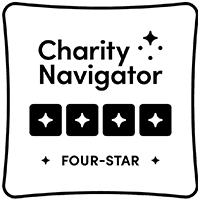
The Changing Climate for Zero Hunger
Editor’s note: A shorter version of this editorial was originally published by Thomson Reuters News on November 29, 2018.
Over the past two months, the international community has been informed by new data, and new warnings, about the drivers of global hunger and the number of people worldwide who suffer from malnutrition. On November 6, the United Nations held a high-level briefing to alert world leaders to this evidence.
Clearly, the world has dramatically reduced the scale of hunger emergencies and increased its commitments to improve nutrition.
- Between 2000 and 2015, hunger levels in the world’s poorest countries fell by 29 percent.
- Since 2012, the number of children who suffer from stunting, largely caused by chronic malnutrition, has declined by 9 percent.
- Three years ago, world leaders pledged to end hunger and malnutrition in all its forms by 2030, and the United Nations declared 2016-2025 “The Decade of Nutrition.”
However, we are now experiencing tragic setbacks. According to the new UN hunger report released September 2018, global hunger is on the rise for the third year in a row—after ten years of decline—due to the impact of climate shocks, conflict, and economic slowdowns.
The number of extreme disasters related to climate shocks has doubled since the early 1990s, according to the UN report. Tragically, the populations who can least afford it are paying the price.
In October, another stark new report from the United Nations’ Intergovernmental Panel on Climate Change warned that the world faces a significant risk of worsening food shortages and poverty by 2040 as a result of climate change.
Enough Food Does Not Mean Enough Nutritious Food
Today, 821 million worldwide are undernourished—one in every nine people. Yet this statistic only accounts for the number of people who do not get a sufficient daily intake of calories. Enough calories—or food—does not mean enough nutritious food. Micronutrients like vitamin A, folate, iron, and zinc are vital.
One in every three women of reproductive age is affected by anemia, much of which is caused by inadequate nutrition. Among pregnant women, severe anemia from iron deficiency can cause premature delivery, low birth weight, and maternal and child deaths.
Malnutrition is the single greatest threat to child survival today, contributing to more than 45 percent of all child deaths worldwide. Malnutrition is preventable and treatable.
Unlocking Invaluable Potential
Good nutrition is critical to the healthy growth and development of children, especially in the 1,000 days from the start of pregnancy to a child’s second birthday. It is also important for their cognitive development, and hence, educational success—both of which are vital determinants of labor productivity and economic growth.
Good nutrition is also an essential driver of economic growth. The World Bank estimates that for every $1 invested in nutrition, a country can expect a $16 return in economic and health benefits.
Evidence shows that a set of high-impact nutrition actions can save hundreds of thousands of lives annually.
These actions include promoting exclusive breastfeeding, educating caregivers about good nutrition and hygiene practices, providing supplements for women during pregnancy and for infants after birth, empowering families to grow nutritious foods on household farms, and strengthening community-based health care.
Simple Solutions Deliver Dramatic Results
If nearly every mother in the world breastfed her baby, the deaths of 823,000 children and 20,000 mothers each year could be prevented. Nutrition experts estimate that a 40 percent decrease in stunting by 2025 could add over $80 billion to national incomes.
The new UN data warns that ending malnutrition also requires immediate action to help vulnerable communities become more resilient to climate shocks.
Helen Keller International is working with vulnerable communities to strengthen health systems and improve nutrition. But we are also helping communities predict and reduce the impact of climate shocks.
In South Asia, one of the most flood-prone countries in the world, we are empowering local disaster management committees to develop early warning systems and emergency plans to help communities prepare for and recover from disasters. We are also improving nutrition by helping families produce sustainable sources of nutritious food on household farms and encouraging caregivers to adopt optimal infant and young child feeding practices, especially during the 1,000-day “window of opportunity.”
In sub-Saharan Africa, our holistic approach promotes essential nutrition actions among vulnerable mothers and children, while preventing malnutrition by fortifying key staple foods with micronutrients and empowering households to increase production of drought-resistant, nutritious crops.
Helen Keller International delivers such programs in 19 countries across Asia and Africa.
Ending malnutrition by 2030 will require a heroic effort from world leaders—and ordinary citizens everywhere. We face challenges, to be sure. But as our co-founder Helen Keller said, “You will succeed if you persevere.”



